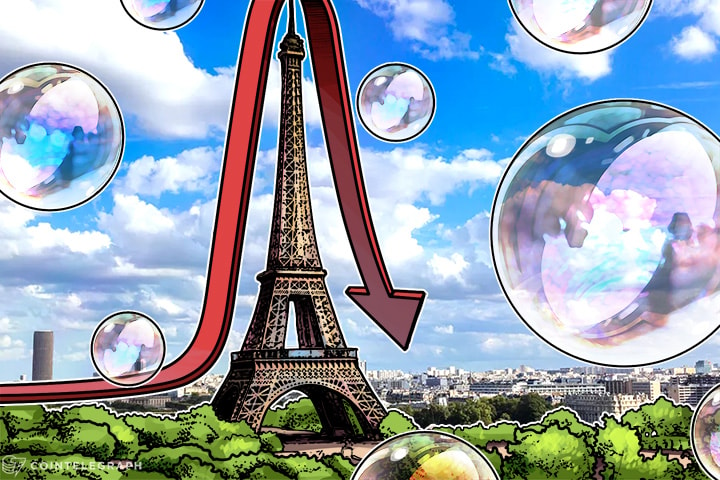Digital currencies have experienced incredible price growth since the beginning of 2017, leading many to wonder if their market value is exceeding their intrinsic value.
When this happens, speculators drive the price of an asset to lofty and unsustainable heights, creating a financial bubble.
These bubbles inevitably pop, bringing potential ruin to those who bought near the top.
Severe speculative bubbles can also discredit an entire market sector, leading to a prolonged bear market as traditional investors stay away.
Rollercoaster
The digital currency market has seen extreme price growth over the past seven months, with much of it occurring since May.
Some currencies, such as Bitcoin, have seen relatively modest growth. Other currencies, such as NEM and BitShares, have seen much more dramatic price increases. From the beginning of 2017 until each currencies respective peak, we can see that Bitcoin price increased by 290 percent.
While large in traditional terms, this is nothing compared to the price appreciation that NEM (8,156 percent) or BitShares (11,480 percent) experienced. Even Dogecoin, long reported to be “dead” in industry news, surged by 1,652 percent during this time.
Such growth is almost certainly unsustainable. Historically, massive increases in asset prices during a short period of time has created bubbles which invariably pop.
Approaches vary
The rapid increase in the price of cryptocurrencies has resulted in many experts calling it a bubble and advising caution while investing.
Others argue that a digital bubble is impossible due to the theory of market bipolarity. According to George Soros, market conditions are “reflexive” due to the synchronization cognitive and manipulative functions.
The cognitive function is where economic participants assess facts for what they are. The manipulative function, on the other hand, turns one fact (or a couple of facts) in order to gain an advantage. Once the cognitive mind is affected by the manipulative mind, the neutrality will be “painted” in a different light it becomes a manipulated fact.
Therefore, markets reflect the view and perspective of participants, not the full scope of economics.
Historic examples
The first known bubble in history was Dutch Tulip Mania. As Dutch traders sold tulip futures, prices quickly diverged from the underlying value of the actual asset.
Traders began buying futures on tulip bulbs not because they wanted the bulbs, but because they thought they could sell their contract later for a higher price than they paid.
Tulip mania continued until the value of one tulip bulb exceeded the value of a luxury home in Amsterdam. Predictably, once new buyers stopped entering the market, the price of tulips collapsed back to pre-bubble levels.
The South Sea Bubble is another fascinating example. The South Seas Company was created in 1711 in hopes of mimicking the success of the British East India Company. In return for a large payment to the British treasury, the South Seas Company was granted exclusive trading rights with South America. Expecting to be showered with riches and encouraged by massive hype, demand for South Seas Company stock soared to unimaginable levels. Unfortunately, it eventually became clear that the company would fail, and the price of South Seas Company stock fell to zero.
“Eiffel Tower” pattern
Such bubbles generally deflate rapidly, forming what traders refer to as an “Eiffel Tower” pattern. This pattern is seen when the price of an asset increases exponentially, peaks and drops back to its original price just as rapidly.
This formation looks like a two-dimensional picture of the Eiffel Tower. The chart of total market capitalization on coinmarketcap.com shows that the digital currency sector appears to have peaked and is dropping rapidly. The exponential rise took about two months, so the return to the mean will likely take the same length of time. There’s no certainty that the digital currency bubble is popping yet, but it does appear likely.


